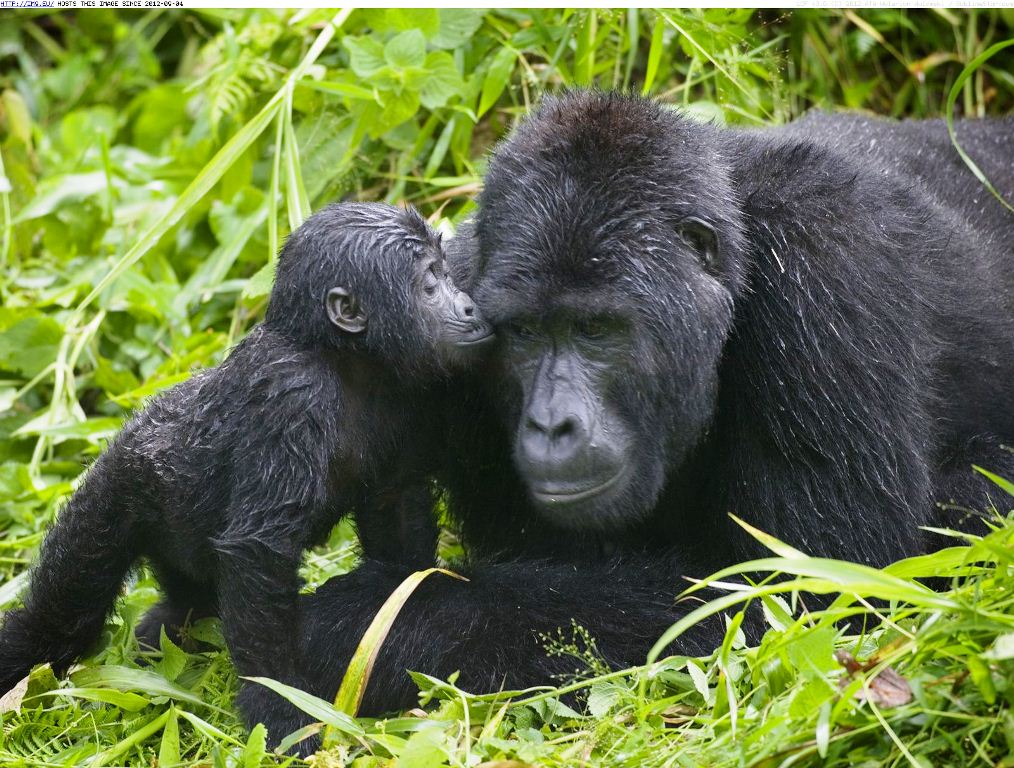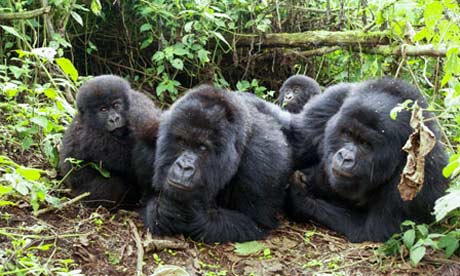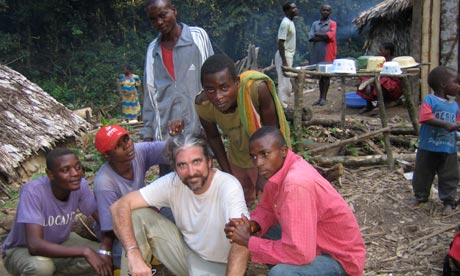Greg Cummings leads safaris to see gorillas in their natural habitats across central Africa, in Uganda, Rwanda and Congo. Here he tells us about the arduous treks his job entails – and its heart-stopping rewards.
We’re flying south over Uganda at 7,000m when our pilot starts to descend. Below us the Nile snakes through lush vegetation, shimmering in the morning sun as it churns up white froth around the scattered islets that obstruct its course toward the Albertine Rift.
My clients, a Hollywood producer and his son, are glued to the windows in anticipation of buzzing the legendary Murchison Falls. I have visited on many occasions, but this is the first time I’m getting a bird’s eye view. Here the Victoria Nile forces 300 cubic metres of water a second through a gap only seven metres wide, before flowing calmly westward into Lake Albert. Our Cessna 421 descends to less than 1,000m over the base of the falls, the Devil’s Cauldron. From here we can pick out individual crocodiles on the banks, waiting patiently for a meal. Murchison never fails to deliver.
I am a gorillaphile (strictly platonic), having worked in gorilla conservation for two decades. But for the past six years I have been taking travellers over mountains and through jungles, to see gorillas. This involves everything from organising a human caravan before setting off on foot into the jungle – porters, security guards, chefs – to making sure the helicopter arrives on time. And I have trekked with some interesting people: celebrities, CEOs and polymaths. There’s no better time to get the benefit of a genius’s mind than after he or she has spent an hour with the gorillas.
Gorilla tracking is often listed as one of 50 things to do before you die. I certainly never tire of spending time with our hairy mountain cousins. I visited the world’s most easterly gorilla habitat (Bwindi, in Uganda) and the most westerly (Cross River, in Nigeria) before I was 10 years old, and I’ve made it my life’s ambition to trek through every one of them. I regularly take clients to Bwindi, and to Volcanoes national park in Rwanda, but if it’s safe we can visit any number of gorilla parks across central Africa.
I’ve just prepared a 10-day gorilla-trekking itinerary to Dzanga-Sangha Reserve in the Central African Republic, which includes three days in the forest living and hunting with a community of Ba’Aka pygmies.
Tracking gorillas is not an exact science. They move around the forest at will, so you need to be prepared for hours of arduous climbing. When the film producer and his son trekked up the steep slopes of Karasimbe in Rwanda recently, they threatened to give up several times. But they were speechless when after a three-hour walk we finally found the Suza group, in a glade in the hagenia forest.
It had begun to rain, so they were sheltering under bushes and trees, and remained stock still as we wandered among them. It took me a moment to notice that one female was cuddling infant twins. Maybe it was the strain of the climb, but I was moved to tears when they both gazed up at me from her arms. No other animal looks at you that way.
At my company, Gorillaland Safaris, I can scale trips up or down according to my clients’ needs. I take tourists to visit great apes, and experts to search for rare sub-species. Typically, I drive couples or groups of four into the Albertine Rift for four or five days of tracking primates and staying in sublime eco-lodges.
There is untold magic in these forests. Years ago I was trekking through the Congo side of the Virunga, Africa’s oldest national park, with my friends Popol and Gapira, who were taking me to see a gorilla group whose incumbent silverback had recently been shot and killed by soldiers. Unusually, after the death of the previous silverback, a wild, ex-lone silverback had assumed leadership of what was a group of habituated gorillas (those familiar with human presence).
As we approached, he became quite agitated and refused to allow us any closer, yet he could not convince the other gorillas to flee. He screamed, beat his chest and thrashed about the vegetation like a demon. Eventually we gave up our pursuit and sat down in a dried-up riverbed. All at once the gorillas began to emerge from the trees and cross the riverbed a few metres from us: large, black, shaggy, charismatic mammals moving like shadows. They wanted to see us. It was the first time I felt their kinship.

Feeling peckish … an infant gorilla plants a kiss on a silverback male. Photograph: Paul Souders/Getty
Following this summer’s 50% hike in the price of gorilla permits in Rwanda, to $750, tracking mountain gorillas in the Congo, which costs only $400 a day, has become popular again. While these seem like high prices for park permits, there are just too few gorillas in the wild, and their habitats too fragile, for it to cost any less.
My driver Patrice and I have made countless journeys across East Africa. But our favourite direction out of Kampala is due west. Few places thrill like the Congo. On one occasion we took a party to meet a tiny, isolated population of gorillas in the Congo, thought to be a unique sub-species. We crossed the border and drove to one of the highest Rift Valley escarpments, where we parked the car.
The arduous climb to Camp Kalibina, at 3,000m on the slopes of Mount Tshiaberimu, took us two-and-half hours. The last of our expedition arrived after nightfall, and we gathered around the campfire. I explained that whether they were a unique sub-species or not, the relative isolation of this population made it a vital reserve in the gorilla gene pool.
The next morning, with a light rain falling, we set off on our trek. After an hour of tramping, the scent of decay and fresh growth bursting from every footfall, we found them foraging in a bamboo forest, a small group consisting of a silverback, a mature female, an adolescent female and infant male. Compared with other sub-species I’ve encountered, Tshiaberimu gorillas are quite small.
Typically, while the adults busied themselves elsewhere, the youngsters paid us their full attention. The female was more interested in Patrice than anything else, tugging at his clothing and looking him up and down. A ranger tried to discourage her, but every time she retreated her younger brother, a third of her size, goaded her to return. She would apparently then pleasure herself, before charging back to grab Patrice by his trousers. She tried to follow us when we left, and it took a good deal of effort to dissuade her. In my 20 years observing gorillas, I’d never seen anything like it.
It is possible to visit the Tshiaberimu gorillas by arrangement with the Congolese Wildlife Authority (iccn.gorillacd.org). This is a trek anyone can do and it is well worth the physical effort, though there is as yet very little demand. But if Tshiaberimu becomes a popular destination, the authority would be wise to limit the permits severely – there are only 21 gorillas on that mountain.
Uganda itself has an abundance of wildernesses within half a day’s drive of the capital: woodlands, acacia savannahs, swamps, lakes the size of countries, and rainforests where chimpanzees and gorillas have lived for thousands of years. The bird life is second to none. More than 1,100 avian species range through Uganda – more than three-quarters of all the birds ever recorded in sub-Saharan Africa.
Above all, Ugandan citizens are some of the friendliest and most hospitable people you will meet in Africa. This is a gentle, graceful nation, despite its troubled past.
Read more about Greg Cummings on www.gorillaland.net







